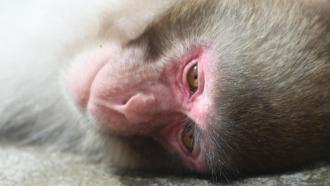Photo: Siddharth Kankaria / Research Matters
There are very few relationships in nature that are eternally bonded together. One such is the relationship between fig trees and some wasps. In fact, there is a group of wasps that are so closely associated with fig trees that they are called “fig wasps”. Some of them are beneficial, acting as pollinators for the fruits but others are just parasites using the fig itself as a closed nest to hatch and develop their larvae. In fact, every species of fig has its own community of pollinating and parasitic wasps.
The pollinating wasps enter the fig fruit and lay their eggs inside. In the process, they pick up pollen from the flowers and subsequently spread it to other flowers, helping in pollination. The parasitic wasps, on the other hand, are more conniving; rather than enter the fig fruit, they use a special probe to pierce it from the outside and then lay eggs. This slender, rod-like structure is called an ‘ovipositor’.
Since the wasps cannot physically explore the site where they will lay their eggs, the ovipositor has developed into a very sophisticated tool. Not only does it act as a guiding probe, it also acts as a ‘nose’. Just like pigs can sniff out the best places for truffles, the wasp’s ovipositors sniff out the cosiest spot to lay eggs. In a recent study, Pratibha Yadav and Dr. Renee Borges from the Indian Institute of Science, Bangalore, have found that non-pollinating fig wasps can smell with their unique ovipositors.
Whenever pollinating fig wasps lay their eggs, the larvae hatch out and start to breathe the air within the fig. This increases the amount of carbon dioxide in the enclosed space. Non-pollinators use this extra carbon dioxide in the fig’s space as a guide to choose the best spots for their own eggs. The real question though, is “How do they do this?” Unlike truffle pigs that have nostrils, nerves and a special brain centre to process smell, the wasps’ ovipositors are slender, almost hair-like, structures.
In this study, the researchers found that the minute ovipositors have even more minute sensory receptors at their tips, called ‘sensilla’. These sensilla exhibit an electrophysiological response to the presence of carbon dioxide. Simply put, when carbon dioxide vapours stimulate them, they respond by generating electricity, which can be measured in principle. However, there are no machines readily available to study this electrophysiology of ovipositors.
In order to work around this, the researchers decided to modify what was already available. They modified a machine designed to study the electrophysiology of insect antennae, to suit their purpose. Using this enhanced tool, they found that the ovipositors of the wasps "smelt" volatile compounds released by the figs. They also found that the ovipositors reacted to an air stream containing 0.5% of carbon dioxide. “We were thrilled to be able to technically overcome the challenges of this difficult system and observe the sense of smell (olfaction) in the ovipositor of non-pollinating fig wasps,” recollects Ms. Yadav.
Since the antenna in insects is the first nose, the researchers covered the antennae of these wasps with silicone to prevent them from being stimulated by gases such as carbon dioxide. Despite the first nose being rendered out of action, the second nose responded. From this, the scientists realized that the sensilla present in the ovipositors are sensitive to volatile compounds like carbon dioxide.
Having proved that non-pollinating fig wasps have ovipositors that are sensitive to volatile chemicals, the researchers are now looking at how the structure of these tiny ovipositors could inspire a ‘downsizing’ of the currently used gas sensors to detect a wide variety of molecules. It is obvious that to detect small quantities of chemicals, the sensor or the detecting apparatus has to be very sensitive. The design of such super-sensitive micro-sensors is something the ovipositors could inspire.
“We do not have any particular use of sensor in mind as of now, but understanding sensory nature of small organs like ovipositors can definitely provide insights and ideas into scaling down of gas sensors and making them effective at a micro-level”, says Pratibha Yadav. While this processing of ‘scaling down’ has so far proved difficult, it is no doubt that it will be taken up as a challenge. Given the new understanding of wasps’ way of using their ovipositors to sniff out the best nesting spots, the progress in this direction seems very plausible.






